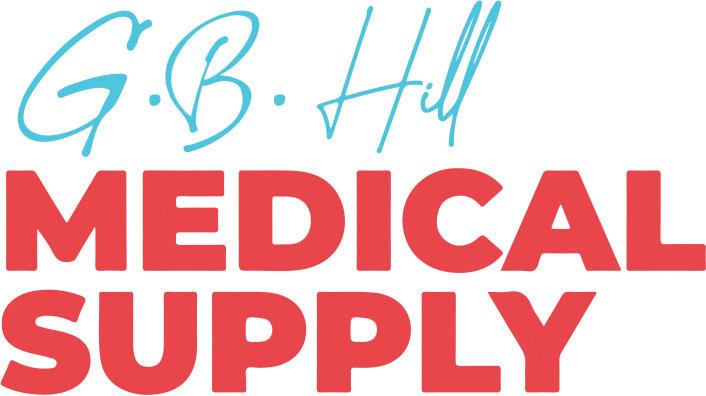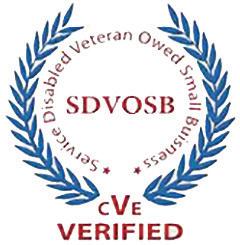
5 minute read
TRYTHISDISH
by Kim Beavers, MS, RDN, CDCES


Registered Dietitian Nutritionist, Chef Coach, Author Follow Kim on Facebook: facebook.com/eatingwellwithkimb
Morning Burst Scones
Enjoy a delicious morning treat that provides antioxidants to boost your immune system.

Ingredients
• 2 cups white wheat flour (10 ounces)
• 1/3 cup sugar (+ 2 teaspoon to sprinkle on top)
• 1 teaspoon finely grated lemon rind (zest of about one lemon)
• 1 teaspoon baking powder
• ¼ teaspoon baking soda
• ½ teaspoon salt
• 4 tablespoons unsalted butter cut into chunks
• 1 cup fresh blueberries
• ½ cup vanilla yogurt
• ½ teaspoon almond extract
• 2-4 tablespoons fat free milk
• 1 large egg
Instructions
Preheat oven to 400°F. In the work bowl of a food processer, mix 2 cups all-purpose flour, 1/3 cup sugar, lemon zest, baking powder, baking soda, and salt. Next add the butter and pulse until well combined (~8-10 pulses). Transfer the mixture to a large bowl and stir in the blueberries.
In a small bowl whisk together yogurt, extract, and egg until smooth. Using a fork, stir yogurt mixture into flour mixture until large dough clumps form add in milk 1 tablespoon at a time until desired consistency is reached (you want the mixture just barely moist but not dry). Use your hands to press the dough against the bowl into a ball. (The dough will be sticky in places, and there may not seem to be enough liquid at first, but as you press, the dough will come together.)
Place dough on a lightly floured surface and pat into a 7- to 8-inch circle about ¾-inch thick. Sprinkle with 1-2 teaspoon sugar. Use a sharp knife to cut into 8 triangles; place on a cookie sheet lined with parchment paper, about 1 inch apart. Bake until golden, about 15 to 17 minutes. Cool for 5 minutes and serve warm or at room temperature.
Yield: 8 servings (1 scone = 1 serving)Nutrient Breakdown: Calories 268, Fat 12.5g (7g saturated fat), Cholesterol 57mg, Sodium 273mg, Carbohydrate 34g, Fiber 1.3g, Protein 5.8g, Potassium 84mg, Phosphorus 78mg Carbohydrate Choice: 2 Carbohydrate

“I’m
One sure way to find out if you can eat the fish you catch in the Savannah River, or really any river in any state, is to check your state’s environmental agency website for the latest recommendations and advisories.

You can also put “Fish and Shellfish Advisories and Safe Eating Guidelines” into your web browser to be directed to the EPA. Of course, if you simply fish for sport and “catch and release” the way many people do these days, you don’t have to worry about the safety issue.

Looking at the Georgia guidelines for Lake Thurmond, if the fish is larger than 12 inches, the advisory is to have no more than one meal a week of largemouth and hybrid bass, because of the possibility of mercury contamination.
Advisories for eating fish in the Savannah River depend upon what part of the river you are fishing. There are no restrictions for eating fish in the Savannah River below Clark Hill Dam in Columbia County. If you fish in the Savannah River in Richmond and Burke counties, the advisory is to eat no more than 1 meal per week of largemouth bass. If you are fishing the river in Screven County, the advisory is for no more than 1 meal per week of bluegill sunfish, and at Ft. Howard and the Tidal Gate, the advisory extends to white catfish.
There are many other advisories for fishing in Georgia lakes and ponds, so make sure to check the advisories. For example, there are bright red advisories (do not eat ANY fish) from Spirit Creek above Richmond Factory Pond, because the fish are contaminated with both mercury and thallium. Richmond Factory Pond is located about 3-1/2 miles from Hephzibah in Richmond County. Whether you live in Georgia or some other state, make sure to always check the advisories for the body of water you fish in.
ÂRelating to overall recommendations for all fish, the highest levels of mercury are found in king mackerel, marlin, orange roughie, shark, swordfish, tilefish and bigeye tuna. Avoid eating any of these fish.
It is important to mention that people in specific high-risk groups, such as those with immune diseases, pregnant women and young children, should avoid eating raw fish of any type. The prudent recommendation is that everyone, even you, eat only fish that has been cooked to flakiness, especially if you are eating fish outside the home. I know that these days it is considered very sophisticated to eat raw fish in sushi, or eat fish that is undercooked, such as ordering salmon seared on the outside but mostly raw on the inside. When we order salmon in a restaurant, we always make sure to say, “cook to flakiness,” even if the waiter looks down her or his nose at us. Yes, we know it is not the “in” thing to order this way, but it is the prudent thing to do when you eat fish in restaurants. I choose the “better safe than sorry” option. question about food, diet or nutrition? Post or private message your question on Facebook (www.Facebook.com/ AskDrKarp) or email your question to askdrkarp@gmail.com If your question is chosen for a column, your name will be changed to insure your privacy. Warren B. Karp, Ph.D., D.M.D., is Professor Emeritus at Augusta University. He has served as Director of the Nutrition Consult Service at the Dental College of Georgia and is past Vice Chair of the Columbia County Board of Health. You can find out more about Dr. Karp and the download site for the public domain eBook, Nutrition for Smarties, at www.wbkarp.com Dr. Karp obtains no funding for writing his columns, articles, or books, and has no financial or other interests in any food, book, nutrition product or company. His interest is only in providing freely available, evidenced-based, scientific nutrition knowledge and education. The information is for educational use only; it is not meant to be used to diagnose, manage or treat any patient or client. Although Dr. Karp is a Professor Emeritus at Augusta University, the views and opinions expressed here are his and his alone and do not reflect the views and opinions of Augusta University or anyone else.
You see tilapia at the fish counter these days. What type of fish are these, and are they safe and healthy to eat? The term tilapia applies to about a hundred species of cichlid fish, not one fish specifically. These fish may be raised either on a fish farm or harvested from the wild, and there can be significant differences in the nutritional profile of the fish depending on the exact species and how they are raised.
Tilapia, like most other fish, is healthy to eat. It is low calorie, low sodium, low sugar, low fat, and is a great source of protein, but does contain a moderate amount of cholesterol. The fat in tilapia is not considered as healthy as the fat in salmon. That’s because salmon and many other fish contain high levels of omega-3 fat, whereas tilapia contains higher levels of omega-6 fats. Omega-3 fats (sometimes called “fish oils”) are healthier to eat than omega-6 fats. As an aside, the types of fat in tilapia are very similar to the types of fat in catfish.
What’s the “No-Nonsense Nutrition” advice about eating the fish you catch? Check your state advisories before eating the fish you catch. And particularly for our Southern tables, if you are eating fried fish with sides of macaroni and cheese, hushpuppies and fatback-and-salt green beans, you should worry more about your fat and your cholesterol profile than the fish’s.













